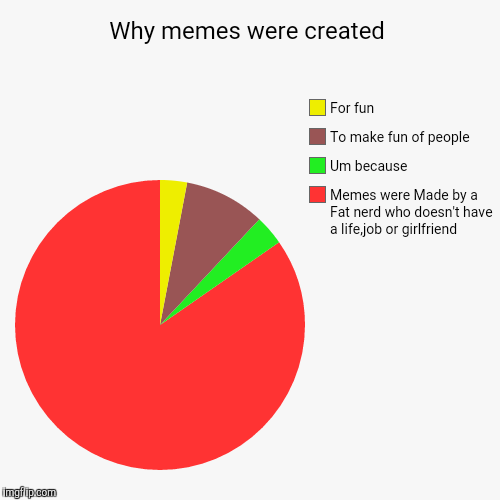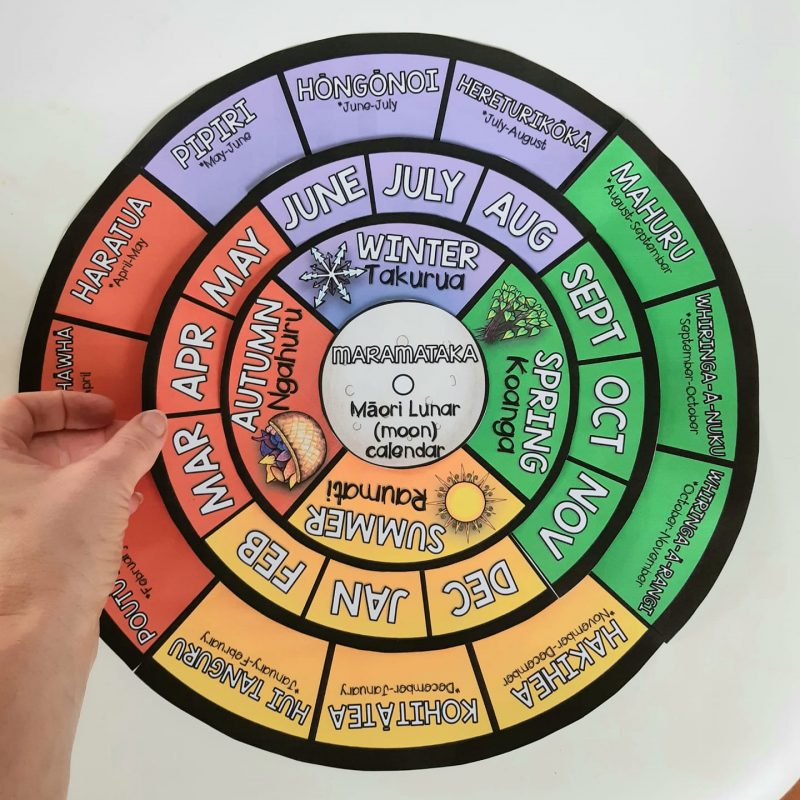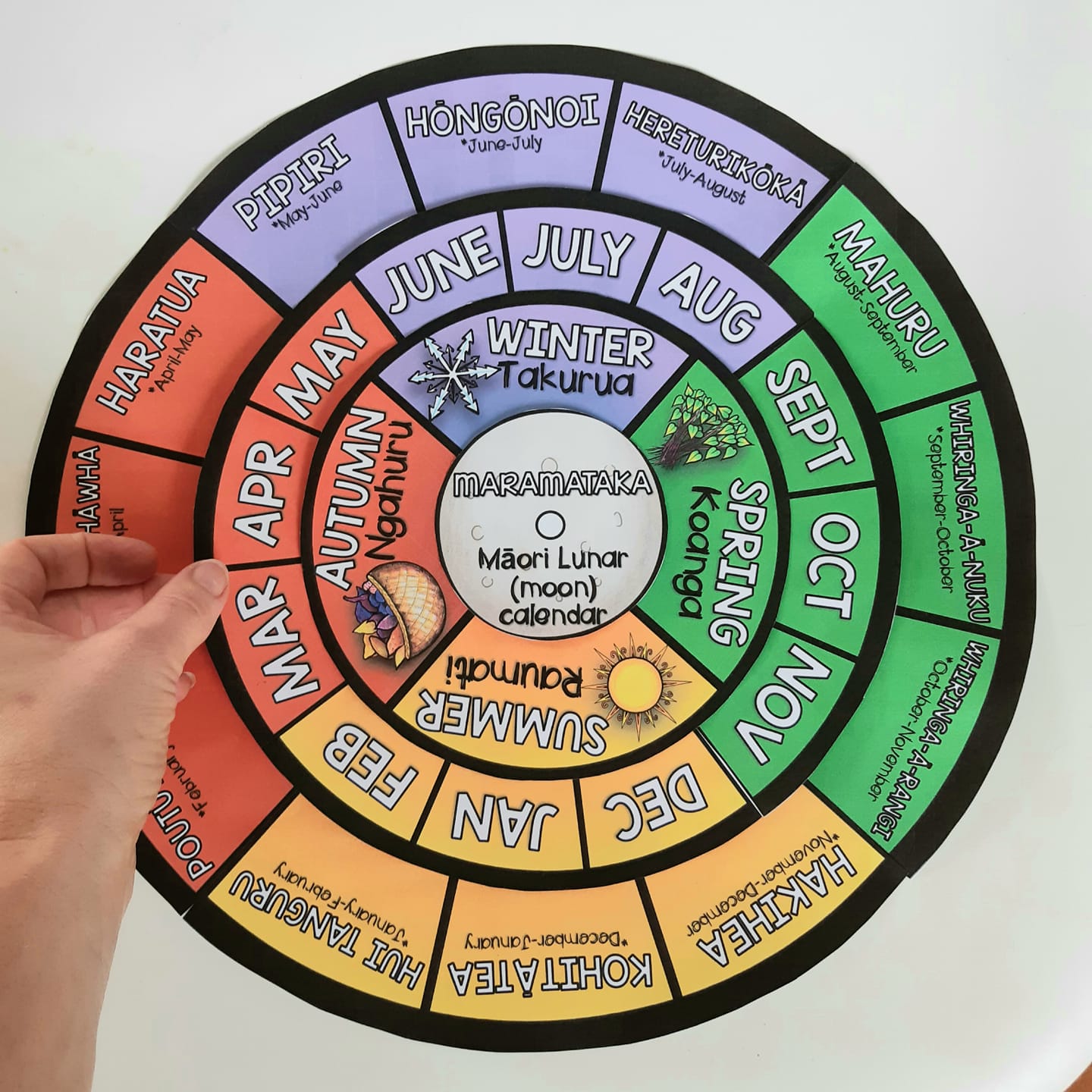
You might have heard of the word “meme” before. It’s a term that has become increasingly popular in recent years, and it refers to a particular type of internet culture. Memes are images, videos, or other media that people share online, often with humorous captions or other commentary. But when did this phenomenon start? When were memes created?
The Origin of the Word “Meme”

The word “meme” was first coined by biologist Richard Dawkins in his 1976 book “The Selfish Gene.” In the book, Dawkins used the term to describe an idea or behavior that spreads from person to person within a culture. He compared memes to genes, which also spread and mutate over time.
The Early Days of Internet Memes

Internet memes as we know them today first began to emerge in the 1990s. One of the earliest examples was the “Dancing Baby” meme, which featured a 3D animated baby dancing to a song. This meme was widely shared through email and became a sensation at the time.
Another early internet meme was the “Hamster Dance,” which was a website featuring animated hamsters dancing to a catchy tune. This meme was similar to the Dancing Baby in that it was shared widely via email and became a popular sensation among early internet users.
The Rise of Image Macros

One of the most popular types of internet memes today is the image macro. This is a type of meme that features an image with a caption or other text overlay. The image macro format first became popular in the mid-2000s, and has since become a staple of internet culture.
One of the earliest and most popular image macro memes was the “I Can Has Cheezburger?” meme, which featured pictures of cats with humorous captions in broken English. This meme became incredibly popular and spawned many imitators and spin-offs.
The Evolution of Memes

Since the early days of internet memes, the phenomenon has continued to evolve and change. New types of memes have emerged, and old ones have fallen out of favor. Some memes have become so popular that they have entered into mainstream culture, while others remain more niche.
Today, memes are a ubiquitous part of internet culture. They are shared on social media platforms, in online forums, and through messaging apps. Some memes are created by individuals, while others are created by brands or other organizations.
Conclusion

In conclusion, while the term “meme” was first coined in 1976 by Richard Dawkins, internet memes as we know them today didn’t really start to emerge until the 1990s. Since then, memes have continued to evolve and change, becoming a ubiquitous part of internet culture. Whether you love them or hate them, it’s clear that memes are here to stay.
Related video of When Were Memes Created?

The Birth of M&Ms
It all began in 1941, during World War II, when Forrest Mars Sr. saw soldiers eating chocolate pellets coated with a hard candy shell that prevented the chocolate from melting in their hands. He realized there was potential in this concept and partnered with Bruce Murrie, son of Hershey's president, to create M&Ms.

The Name
The "M" in M&Ms stands for Mars, but there are many theories about what the other "M" could stand for. Some say it represents Murrie, while others believe it represents "melts in your mouth, not in your hands," which was a popular slogan for the candy.

The Product Launch
The product was first launched in 1941, but the candy was initially only available to the military. It wasn't until 1945 that M&Ms were sold to the public.

The Evolution of M&Ms
Over the years, M&Ms have evolved to include new flavors, colors, and even products. In 1954, peanut M&Ms were introduced, and in 1989, crispy M&Ms were launched. In 1995, blue M&Ms were added to the mix, and in 2017, caramel M&Ms were introduced.

The Brand
M&Ms has become a global brand, with products sold in over 100 countries. They have also become a popular pop culture reference, appearing in movies, TV shows, and even video games.

The Future of M&Ms
M&Ms continues to innovate and expand its product line. In 2021, M&Ms launched its first-ever chocolate bars, which are available in five flavors: milk chocolate, peanut, crispy, almond, and crispy mint.

The Impact of M&Ms
Since their inception, M&Ms have become a beloved candy around the world. They have also had an impact on the candy industry, inspiring other companies to create their own candy-coated chocolates.

The Legacy of M&Ms
M&Ms have become a cultural icon, with their distinctive packaging and recognizable logo. They have also become synonymous with fun and enjoyment, making them a favorite candy for people of all ages.

The Conclusion
In conclusion, M&Ms were invented in 1941 by Forrest Mars Sr. and Bruce Murrie. They have since become a global brand, with products sold in over 100 countries. Over the years, M&Ms have evolved to include new flavors, colors, and even products. They have had a significant impact on the candy industry and have become a cultural icon. It's safe to say that M&Ms will continue to be a beloved candy for generations to come.
Related video of When Were M&Ms Invented

The History of Welch's Grape Jelly
Welch's Grape Jelly is a popular American brand of jelly, made from Concord grapes. The company was founded in 1869 by Dr. Thomas Bramwell Welch, a dentist and a devout Methodist, who invented a method for pasteurizing grape juice so that it could be preserved without fermentation. The goal was to create a non-alcoholic beverage that could be used for church sacraments, as alcohol was widely considered sinful at the time.

Dr. Welch's new invention was an instant hit, and soon he began selling grape juice commercially. In 1918, the company expanded its product line to include grape jelly, which quickly became a popular condiment for bread and toast.
The Invention of Grape Jelly
The exact date of the invention of grape jelly is not known, but it is believed to have been around the early 20th century. The process for making grape jelly involves cooking grape juice with sugar and pectin until it thickens and sets. Pectin is a natural substance found in fruit that helps to thicken and set jams and jellies.

The Concord grape, which is used to make Welch's Grape Jelly, was first cultivated in the mid-19th century by Ephraim Wales Bull, a farmer from Concord, Massachusetts. Bull spent years experimenting with different grape varieties, looking for one that was hardy enough to survive the New England winters and that had a distinctive flavor. He finally succeeded in 1849, when he developed the Concord grape.
The Popularity of Grape Jelly
Grape jelly quickly became a popular condiment in the United States, and Welch's Grape Jelly became one of the most recognized brands. The company's advertising campaigns, featuring the slogan "Welch's grape jelly, the toast of the town," helped to cement its popularity.

Today, Welch's Grape Jelly is still a popular brand, and the company has expanded its product line to include other fruit spreads, juices, and snacks. The company is now owned by the National Grape Cooperative Association, which is made up of over 900 family farmers who grow Concord and Niagara grapes.
The Benefits of Grape Jelly
Grape jelly is not only delicious, but it also has some health benefits. Grape juice and grape jelly contain antioxidants, which can help to protect the body against damage from free radicals. They also contain resveratrol, a compound that has been shown to have anti-inflammatory and anti-cancer properties.

In addition, grape jelly is a good source of energy, as it contains carbohydrates and natural sugars. It is also low in fat and calories, making it a healthier alternative to other sweet spreads like jams and honey.
The Future of Welch's Grape Jelly
Welch's Grape Jelly has come a long way since its invention in the early 20th century. Today, the company is focused on innovation and sustainability, and is committed to using renewable energy sources and reducing waste.

The company is also working on developing new products and flavors, and has recently launched a line of organic grape juice and snacks. With its long history and commitment to quality, Welch's Grape Jelly is sure to remain a favorite for generations to come.
Conclusion
Welch's Grape Jelly is a beloved American brand that has been around for over a century. Its history is closely tied to the invention of grape juice, and the company has remained committed to quality and sustainability over the years. Whether you enjoy it on toast, in a sandwich, or as a cooking ingredient, Welch's Grape Jelly is sure to add a touch of sweetness to your day.
Related video of When Was Welch's Grape Jelly Invented?
God is a term that has been used for centuries by people all over the world. It is a word that is used to describe the divine being that is believed to have created and governs the universe. But when was the word God first used? Let's take a closer look at the history of this powerful word.
The Origins of the Word God
The word God can be traced back to the Proto-Germanic word "gudan" which means "to invoke." This word was later adapted into the Old English word "god" which was used to refer to the Germanic gods. These gods were believed to have been powerful beings that had control over various aspects of nature.
As Christianity began to spread throughout Europe, the word God began to take on a new meaning. It was used to describe the one true God that Christians believed in. This God was seen as the creator of the universe and the source of all goodness and light.
The Use of the Word God in Religious Texts

The word God is used frequently in religious texts such as the Bible and the Quran. In these texts, God is portrayed as an all-knowing and all-powerful being who has control over the universe. He is often described as being loving and merciful, but also as a God who demands obedience and respect.
While the word God is most commonly associated with Christianity, it is also used in other religions such as Islam and Judaism. In these religions, God is seen as a powerful and holy being who is to be worshipped and revered.
The Evolution of the Word God

Over time, the meaning of the word God has evolved and changed. In some modern interpretations, God is seen as an abstract concept rather than a personal being. Some people use the term to refer to the universe or to a higher power that is beyond human understanding.
The word God has also been used in a more metaphorical sense. People might say that they "worship" money or fame, meaning that these things are the most important things in their lives. In this sense, the word God is used to describe something that is worshipped or idolized.
The Importance of the Word God

The word God is a powerful and important word that has been used for centuries. It is a word that is associated with power, authority, and reverence. For many people, the word God represents the ultimate source of goodness and light in the universe.
Whether you believe in God or not, it is clear that the word has had a profound impact on human history and culture. It has been used to inspire people to do great things, to comfort people in times of need, and to provide a sense of purpose and meaning in life.
Conclusion
The word God has been used for centuries to describe the divine being that is believed to have created and governs the universe. It has evolved and changed over time, but it remains a powerful and important word that continues to inspire and influence people all over the world.
Meta Description: Discover the history and evolution of the word God, from its Proto-Germanic origins to its use in religious texts and modern interpretations.
Meta Keywords: God, religion, history, evolution, Proto-Germanic, Christianity, Islam, Judaism.
Related video of When Was The Word God First Used
Computer mouse is an essential tool that we use every day to navigate through our computers. It is hard to imagine using a computer without a mouse. But have you ever wondered when the mouse was invented?
The First Computer Mouse
The first computer mouse was invented in 1963 by Douglas Engelbart. It was a wooden device with two wheels that could move in any direction. It was connected to the computer via a cord and was used to navigate through the computer screen.
The first mouse was not very popular as it was very expensive and difficult to use. However, it paved the way for the modern computer mouse that we use today.
The First Ball Mouse
The first ball mouse was invented in 1972 by Bill English. It had a ball at the bottom that rotated as the mouse was moved. The movement of the ball was translated into movement of the cursor on the computer screen.
The ball mouse was a significant improvement over the first mouse as it was easier to use and more accurate. It became very popular and was the standard mouse for many years.
The Optical Mouse
The optical mouse was invented in 1980 by Steve Kirsch. It used a light-emitting diode (LED) and a photodiode to detect movement. The movement of the mouse was translated into movement of the cursor on the computer screen.
The optical mouse was a significant improvement over the ball mouse as it did not have any moving parts, and therefore, did not require cleaning. It was also more accurate and had a longer lifespan.
The Wireless Mouse

The wireless mouse was invented in 1991 by Logitech. It used radio waves to communicate with the computer and did not require a cord.
The wireless mouse was a significant improvement over the corded mouse as it provided more freedom of movement and reduced clutter on the desk.
The Touchpad

The touchpad was invented in 1992 by Synaptics. It replaced the mouse with a flat surface that could detect movement and gestures.
The touchpad was a significant improvement over the mouse as it was more compact and could be integrated into laptops, making them more portable.
The Trackball Mouse

The trackball mouse was invented in 1952 by Tom Cranston, Fred Longstaff, and Kenyon Taylor. It had a ball on the top that could be rotated to move the cursor on the computer screen.
The trackball mouse was a significant improvement over the first mouse as it was more accurate and could be used on any surface. It was also used in some arcade games and was popular among gamers.
The Gaming Mouse
The gaming mouse was invented in the early 2000s. It was designed for gamers and had additional buttons and features that could be customized for different games.
The gaming mouse was a significant improvement over the standard mouse as it provided more control and precision for gamers. It also had a more ergonomic design that provided comfort during long gaming sessions.
Conclusion
The computer mouse has come a long way since its invention in 1963. It has evolved from a wooden device to a wireless and ergonomic tool that we use every day. The mouse has made computing easier and more efficient, and it will continue to evolve as technology advances.
Related video of When Was The Mouse Invented

Introduction
The King James Bible is one of the most famous and influential books in the history of the English language. It has been in use for over 400 years and has played a vital role in shaping the culture and religious beliefs of many people worldwide. In this article, we are going to take a closer look at the history of the King James Bible and when it was first published.
The Need for a New Translation

Before the King James Bible was published, there were already several English translations of the Bible in circulation, including the Geneva Bible and the Bishops' Bible. However, King James I of England felt that these translations were inadequate and decided to commission a new translation that would be more accurate and consistent with the original Hebrew and Greek texts.
The Translation Process

The task of translating the Bible was given to a group of 47 scholars, who were divided into six committees. Each committee was responsible for translating a specific portion of the Bible, and their work was then reviewed by a select group of scholars before being finalized. The translation process took around seven years to complete and was completed in 1611.
The First Publication

The first edition of the King James Bible was published in 1611, and it was an immediate success. It was praised for its accuracy, beauty, and literary style, and quickly became the standard English Bible. Copies of the King James Bible were produced in large numbers, and it was widely distributed throughout England and the English-speaking world.
Revisions and Updates
Over the years, several revisions and updates have been made to the King James Bible to make it more accessible to modern readers. These revisions include changes to the spelling and punctuation, as well as the addition of footnotes and cross-references to help readers understand the text better.
The Legacy of the King James Bible
The King James Bible has had a profound influence on the English language and culture. Its language and style have been imitated and emulated in countless works of literature, and its stories and teachings have inspired generations of readers. Today, the King James Bible remains one of the most widely read and cherished books in the world.
Conclusion
In conclusion, the King James Bible was first published in 1611 and has since become one of the most important and influential books in the history of the English language. Its accuracy, beauty, and literary style have made it a classic of English literature, and its teachings have inspired and influenced millions of people worldwide.
Related video of When Was The King James Bible First Published

The Gregorian calendar is a solar calendar system that is widely used around the world today. It was introduced by Pope Gregory XIII in 1582 to correct errors in the Julian calendar, which was created in 45 BCE by Julius Caesar.
The Julian Calendar

The Julian calendar was based on a 365-day year, with an extra day added every four years to account for the extra quarter-day in the solar year. However, this system resulted in an error of about 11 minutes per year, which added up to a significant discrepancy over time. By the 16th century, the Julian calendar was off by about 10 days.
The Need for the Gregorian Calendar

The discrepancy in the Julian calendar was causing problems for the Church, as it was affecting the date of Easter. The Church decided that a new calendar system was needed to correct the error and bring the date of Easter back in line with its original date.
The Creation of the Gregorian Calendar

In 1582, Pope Gregory XIII introduced the Gregorian calendar, which made several changes to the Julian calendar. The first change was the removal of the leap year in years ending in "00" that were not divisible by 400. This change reduced the error to only 26 seconds per year.
The second change was the adjustment of the date of the equinox, which had been drifting earlier each year due to the discrepancy in the Julian calendar. Gregory XIII ordered that 10 days be removed from the calendar to bring it back in line with the solar year. The day after October 4, 1582 was October 15, 1582.
The Adoption of the Gregorian Calendar

The adoption of the Gregorian calendar was not immediate. Some countries, such as England and its colonies, did not adopt the new calendar until much later. In fact, it wasn't until 1752 that England and its colonies made the switch, causing a discrepancy of 11 days between the calendars.
Today, the Gregorian calendar is the most widely used calendar system in the world, and it is used for civil and international purposes. It has a 365-day year, with an extra day added every four years, except for years ending in "00" that are not divisible by 400.
Conclusion
The Gregorian calendar was created in 1582 by Pope Gregory XIII to correct errors in the Julian calendar. The new calendar system made several changes, including the removal of the leap year in years ending in "00" that were not divisible by 400 and the adjustment of the date of the equinox. The adoption of the Gregorian calendar was not immediate, but today it is the most widely used calendar system in the world.
Related video of When Was The Gregorian Calendar Made

The Creation of Spongebob Squarepants
Spongebob Squarepants is a beloved animated television show that has captured the hearts of millions of viewers around the world. The show's creator, Stephen Hillenburg, was a marine biologist who had a passion for cartoons. He combined his love of marine life and animation to create the iconic character of Spongebob Squarepants.
After working on the show for several years, Hillenburg and his team finally debuted the first episode on May 1, 1999. The show quickly became a hit with viewers of all ages and has since become one of the most popular animated television shows of all time.

The First Episode
The first episode of Spongebob Squarepants is titled "Help Wanted." In this episode, Spongebob applies for a job at the Krusty Krab, a fast-food restaurant in Bikini Bottom. Despite his lack of experience, Spongebob impresses the restaurant's owner, Mr. Krabs, with his enthusiasm and work ethic.
The episode also introduces several other iconic characters from the show, including Squidward Tentacles, Spongebob's grumpy neighbor, and Sandy Cheeks, a squirrel from Texas who becomes Spongebob's friend.

The Reception of the Show
When Spongebob Squarepants first aired, it was an instant hit with viewers. Critics praised the show's clever writing, colorful animation, and memorable characters. The show quickly became a cultural phenomenon and has since spawned a successful franchise that includes movies, video games, and merchandise.
Spongebob Squarepants has also won numerous awards, including several Emmy Awards and Kids' Choice Awards.

The Legacy of Spongebob Squarepants
Today, Spongebob Squarepants is still going strong. The show has aired over 250 episodes and has become a cultural touchstone for a generation of viewers. The show's popularity has also helped to inspire a new generation of animators and storytellers.
Despite the passing of its creator, Stephen Hillenburg, in 2018, the show's legacy continues to live on. Fans continue to enjoy the adventures of Spongebob and his friends, and the show's impact on popular culture can still be felt today.

Conclusion
The first episode of Spongebob Squarepants aired on May 1, 1999. The show quickly became a hit with viewers of all ages and has since become one of the most popular animated television shows of all time. Despite the passing of its creator, Stephen Hillenburg, the show's legacy continues to live on.